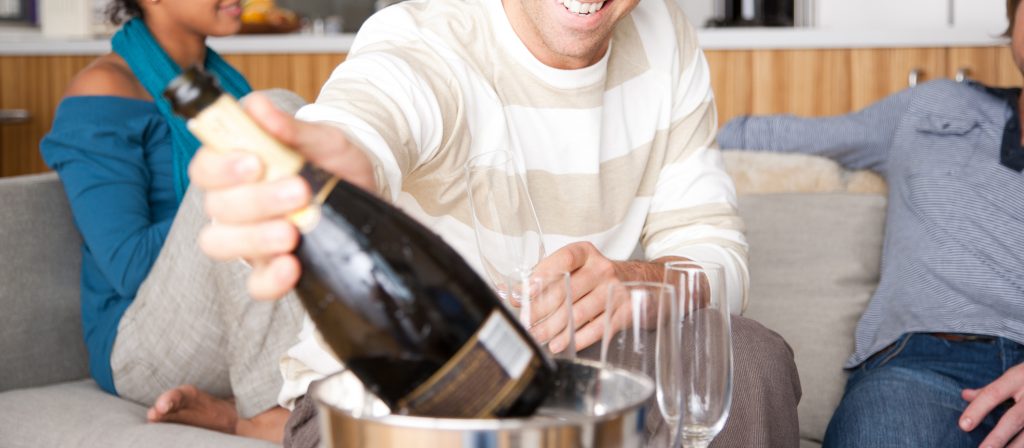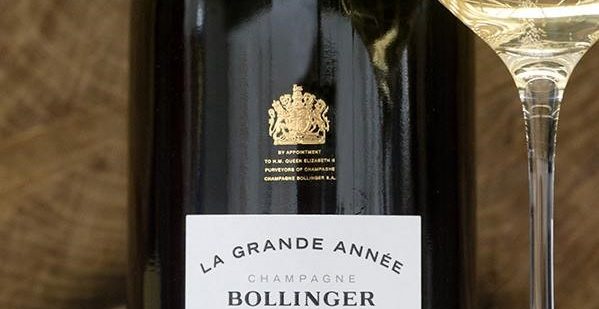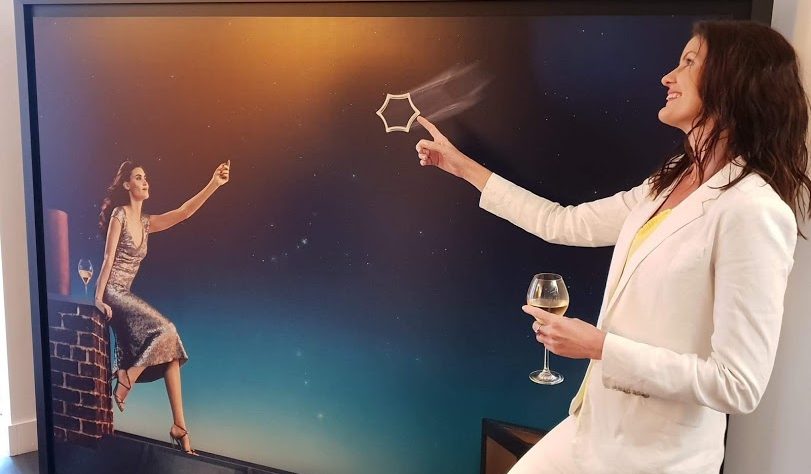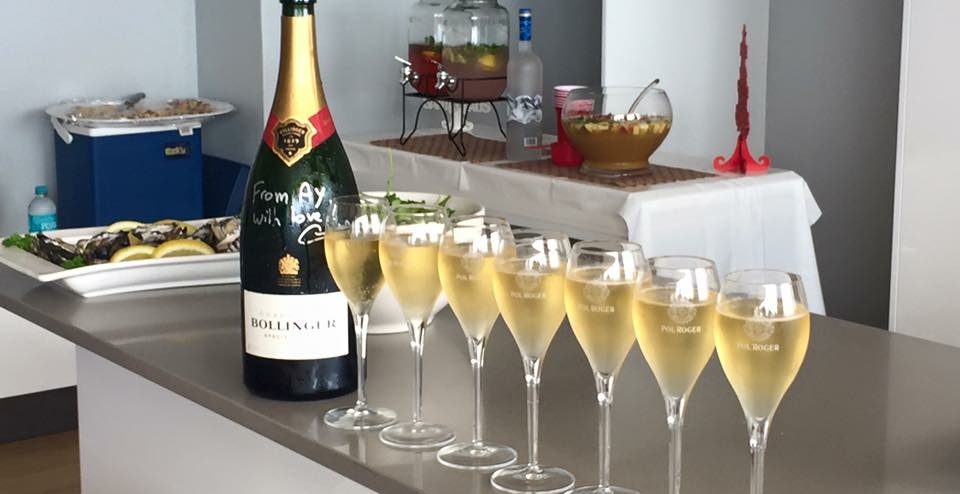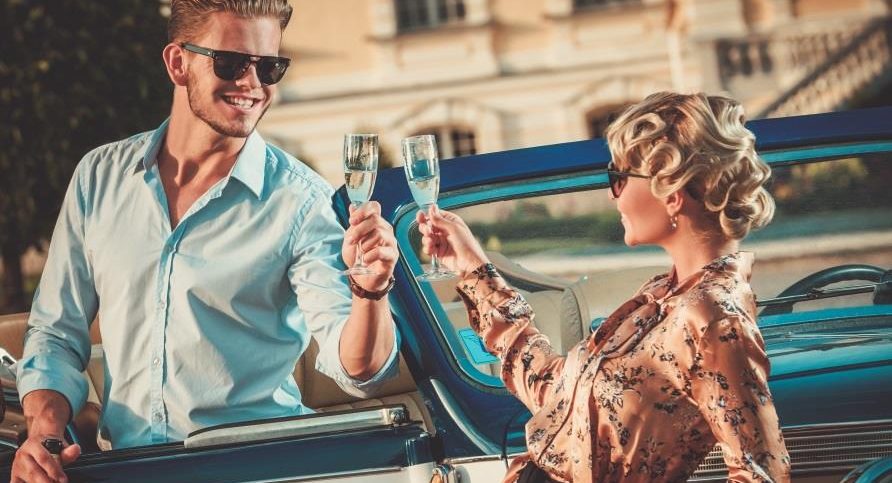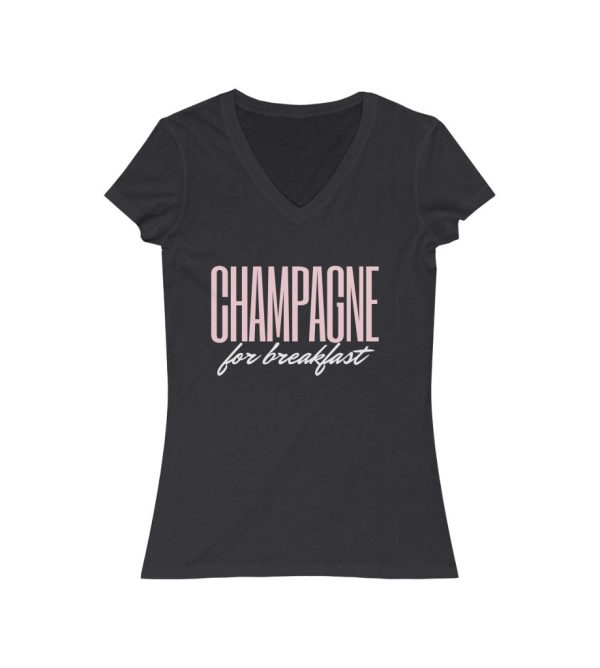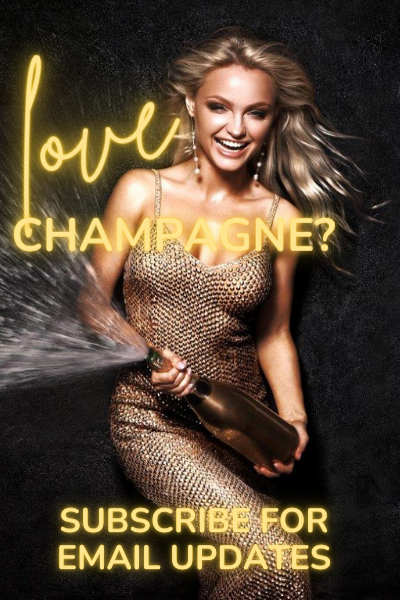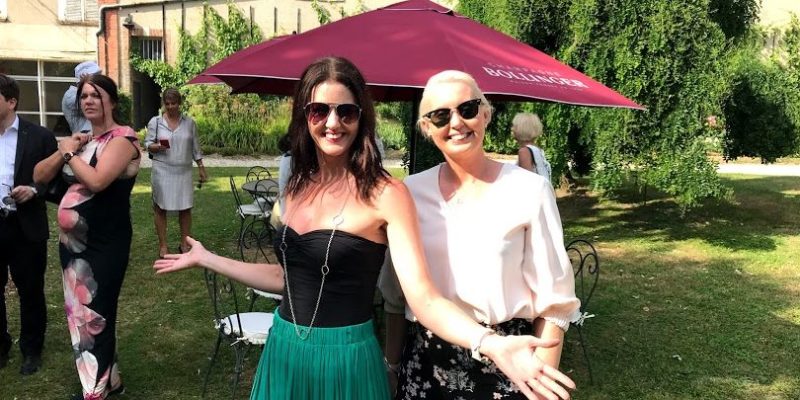
A Visit to Champagne Bollinger
- Marnie Nichols
- July 14, 2019
- A visit to..., Blog, Champagne Bollinger
When I visited the Champagne region in 2018, I was lucky enough to visit Champagne Bollinger twice in a week!
This was a dream come true for me and one of the visits I was most looking forward to during my trip, because Bollinger has always been one of my favourite champagnes. I use the Bollinger Special Cuvée in my “Find your champagne style” tastings to showcase one of the styles… which also happens to be my personal champagne style. (#ICYMI check out my Champagne Style Guide to find your style!) My style is big on pinot noir, oak and age. So not only does Bollinger represent my style, but I choose to showcase it in my tastings because – for a ‘big brand’ that is available pretty much anywhere – the quality of their champagnes is remarkable.
To explain why I think Bollinger champagnes are amazing, I wrote The Top Five Things I Love About Bollinger Champagnes so make sure you check that out.
But this post is another story… the story of Bollinger champagne, actually. Seen through my eyes on my visit to Champagne Bollinger as my hosts and I walked and talked from the maison, to the vineyards, through the cellars and into the private gardens.
So settle in – this story has love, business, family, strong women, hidden wine cellars, and James Bond!
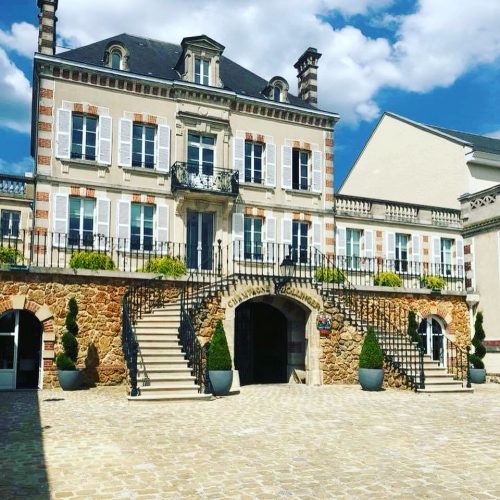
My visit to Champagne Bollinger
My first visit to Champagne Bollinger was as a guest for a group tour and garden party at the house. It’s not an exclusive tour that only champagne bloggers can get in to … anyone can get on the list for the same experience.
If you don’t know about the Bollinger Club 1829, I highly recommend joining. It’s free to join the list and the only way you can get your invitation to special events at the house and stay in touch with all the latest news.
My second visit was as a guest of the house because I write a blog about champagne…. but my hot tip is my first visit was WAY more fun!!!!
The history of Champagne Bollinger
We really should start telling this story at the very beginning.
Once upon a time (1829 to be precise), in a small village in Champagne called Ay, Champagne Bollinger was born. (That’s where the Club 1829 name comes from and the number which features on all of the champagne bottles’ labels).

The original business name was actually Renaudin-Bollinger & Cie taken from two of the three founders. The founders were Joseph Bollinger, originally a German who moved to Champagne to work for another champagne house, and of the other two founders, one was a local count from Ay, Athanase de Villermont, and a local man with an interest in wine, Paul Renaudin.
According to French law at the time, nobility were not allowed to have business interests so the Count wasn’t permitted to be in the business officially so the firm was named Renaudin-Bollinger & Cie. It was founded on 6th February 1829 and, while Joseph Bollinger took care of sales, Paul Renaudin was in charge of the cellars.
Paul Renaudin died not long after forming the company while Joseph Bollinger went on to become a naturalised Frenchman and – very cleverly – married the daughter of the count in 1837. Their sons Joseph and then Georges took over the business and continued the name as just Bollinger.
In 1920 Jacques Bollinger, Georges’ son, become the head of the company and in 1923 he married Elisabeth (Lily) Bollinger (born Law de Lauriston-Boubers).
Lily Bollinger is possibly the most well-known figure in the history of the house and she took over the business when her husband died in 1941.
From all accounts, Lily was pretty impressive in business and marketing, quite the force to be reckoned with, but also well loved locally. She is possibly most famous for one enduring quote about champagne. The quote originated in an article written in a London newspaper after the young journalist asked Lily if she ever drank the champagne she made. Lily’s response was…
“I drink it when I’m happy and when I’m sad. Sometimes I drink it when I’m alone. When I have company I consider it obligatory. I trifle with it if I’m not hungry and drink it when I am. Otherwise, I never touch it—unless I’m thirsty.”
When Lily Bollinger died in 1977, the business was passed on within the family (although Lily had no children of her own) and the house is still independently owned.

In 2008, for the first time in its history, the House appointed a Chairman who was not a family member, Jérôme Philipon.
Champagne Bollinger now also owns Ayala Champagne – you can read about my visit to Ayala here.
In the vineyards
Moving now to present day and my visit to Champagne Bollinger started in the vineyards.
Bollinger is one of a very few champagne houses to produce the majority of their own grapes for their blends but that also buy in some extra grapes.
Bollinger owns 178 hectares of vineyards which are planted with 85% of Grand Cru and Premier Cru vines. The seven main vineyards are in Aÿ, Avenay, Tauxières, Louvois et Verzenay and they are planted with Pinot Noir, with other grape varieties coming from Cuis (for the Chardonnay) and Champvoisy (for Pinot Meunier).
One of the most famous of Bollinger’s vineyards is the Clos Saint-Jacques. This plot is particularly special because when phylloxera killed nearly all of the vines in Champagne in the early 20th century, just three vineyards survived, all owned by Bollinger – the Clos Saint-Jacques and Chaudes Terres and a third vineyard in the village of Bouzy which succumbed to phylloxera in 2003.
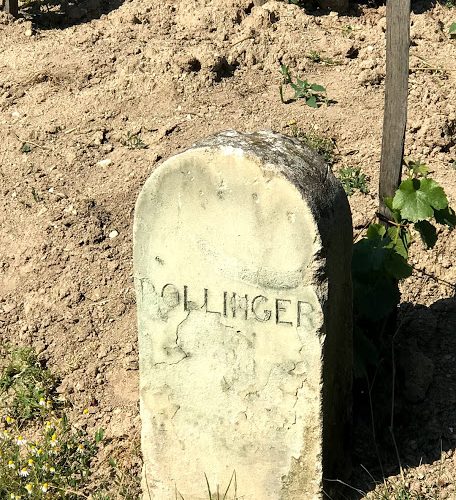
When phylloxera hit, all the vines in Champagne were re-grafted onto American root stock so they could survive the disease (phylloxera attacks the roots so the only way to avoid it is to use the American root stock). Except in Clos Saint-Jacques, where the vines are planted the old way making it a bit like a museum for champagne vineyards.
The ungrafted vines in the Clos are entirely tended by hand and reproduced using a form of layering called provignage, and the grapes are used to make the very exclusive Vieilles Vignes Françaises cuvée.
Onto the barrel room
Next stop on my tour, and we move from the vineyards and into the barrel room.
Oak barrel fermentation is one of the hallmarks of Bollinger champagnes. They use 3,500 barrels to vinify the best musts (or juice) in pure oak… probably the only champagne house to use more barrels in their champagne production is Krug.

While we were in the barrel room, we heard a fascinating introduction as to why Bollinger uses barrels. I cover it in my post The Top Five Things I Love About Bollinger Champagnes (link to post) and so the story here about the barrel room is more light-hearted.
Because they use the barrels for fermentation, just before harvest every year (which is when the barrels are filled) they also need to clean the barrels.
And because wood absorbs liquid, it makes sense that Bollinger would prefer that the barrels absorb some water in August rather than absorbing the wine in September, right?
So they fill the barrels with water and then they have to dry them. And to dry the barrels, they move them to a courtyard which is located across the street. To move the barrel across the street, the village of Ay is probably the only place in the world where you will see a street sign that says “Ralentir roulage de Tonneaux” which translates as “Slow down, we’re rolling barrels.”

The cooper’s workshop
Our next stop on the visit is in the Bollinger cooper’s workshop. Bollinger has the last resident cooper of the Champagne region. And entering the workshop is like stepping back through time, where simple tools hark back to another (pre-computer!) age.

Cooperage is a highly skilled craft: each one of Bollinger’s 3,500 barrels – some of which are nearly 100 years old – require great attention. Wood, like wine, is a living material, and the cooper must carefully examine each stave to repair any that look likely to cave in. So every year once the barrels are not being used they must be filled, dried and mended using these traditional methods.
Into the cellars
Following the wine’s journey, we then made our way from the cooper to the cellars. Most of the wine making techniques that take place in the cellar are exactly what I love about the Champagne Bollinger Style which I talk about in my post The Top Five Things I Love About Bollinger Champagnes (link to post)…
The cellars at Champagne Bollinger represent:
- six kilometres of passageways,
- eleven million bottles of champagne being stored (annual production is about three million bottles) and
- 750,000 magnums of reserve stored village by village (of origin) and vintage by vintage
But what the family didn’t know until 2010 was that there was a hidden wine room!
Hidden wine room at Bollinger
In 2010, an intern was asked to clean up an area in the cellars and in doing so, discovered a stock of old bottles, tucked away in a small corner of the cellars hidden behind a wall of empty bottles.
Thanks to diligent record keeping in the archive, they discovered some of these hidden bottles of wine were from 1830. Remember, Bollinger was only founded in 1829…. so these were actually bottles of the very first wine ever produced by the house!
Using the inscriptions on the bottles, the cellar masters were able to determine the origins and vintage of certain batches, including an 1886 Le Mesnil-sur-Oger, an 1893 from Verzenay, a 1914 from Aÿ and the oldest from 1830.
 Galerie 1829 and La Reserve
Galerie 1829 and La Reserve
This discovery inspired a project to unveil Galerie 1829 and La Réserve – two new wine libraries which opened in the cellars at Bollinger in June 2016.
The wine libraries share the legacy that has been preserved over the course of the centuries.
Galerie 1829 showcases old Bollinger wines preserved since the House was founded in 1829, with a focus on the Bollinger R.D. collection (created in 1952), the vintage Vieilles Vignes Françaises collection (developed since 1969) and the red wine collection. All of the House’s oldest wines pre-dating 1952 are preserved and displayed at the back of the gallery.
La Réserve on the other hand, pays homage to the foundations of Bollinger style – their reserve magnums. Preserved grape by grape and vintage by vintage, this collection of over 3,000 magnums is completely unique in the Champagne region.

And last but not least, James Bond
One of my very first “fun” posts on Bubble & Flute was about the connection between Champagne Bollinger and James Bond (read Bollinger… Bond’s Bollinger here).
But what I discovered on my visit to Champagne Bollinger was that when Bollinger first appeared in the Bond films, Madame Bollinger, who ran the company at the time, wasn’t very happy about it.
She was actually a very traditional Catholic woman and while James Bond wasn’t quite Fifty Shades of Gray, she wasn’t at all excited about the brand match! But her nephew saw the movies and he felt that there was an opportunity and convinced Madame Bollinger to consider working more closely with the Bond brand.
So he invited the Broccoli family (who own the Bond movie rights) to visit Champagne Bollinger for the meeting of two totally different worlds. Can imagine the very traditional French family and the Italian-American mobster from Hollywood working together?
But as it turns out, both families were great fans of wines, and they became friends. And since the movie Moonraker in 1979, Champagne Bollinger has been the official champagne of James Bond.
It is a gentleman’s agreement, meaning there is no formal contract, which is why in some movies you would see Daniel Craig asking for a bottle of Bollinger La Grande Annee, but in other movies you just see one inch of the neck of one bottle and only if you are looking for it, would you know it was Bollinger.
The Garden Party
So finally, after the tour through the vineyards and the barrel room, the cellars and the cooper workshop, our garden party and tastings began.
On my first visit, we enjoyed a summer garden party with an endless supply of Bollinger Special Cuvée and the Rosé as well as introduction to the just-released Bollinger R.D. 2004.
It was honestly one of the most memorable evenings of my life… definitely a highlight of my 5-week trip in 2018.
On my second visit, we had a more structured tasting of the Bollinger Special Cuvée, the Rosé, and the La Grande Année 2007.
 You can pay a visit to Champagne Bollinger too
You can pay a visit to Champagne Bollinger too
Bollinger has recently started welcoming guests. You can make an appointment for a visit to Bollinger via the Champagne Booking website – a fantastic service for hooking you up with your favourite champagnes in Champagne.
But because not everyone will get to visit the house, I hope you enjoyed reading about my rendezvous with Bollinger. Please take my experience to your next tasting of one of their champagnes, and see if it doesn’t taste a little different for knowing a few more things about the family and history behind the champagnes.
And finally THANK YOU to Champagne Bollinger for welcoming me and hosting me for two unforgettable experiences… I hope I do your house, family, history, and your champagnes justice. xx
Have you been to Bollinger? Tell me about your visit and if you go in the future, make sure you post a pic and tag @bubbleandflute #bubbleandflute #happychamper #champagnefan
More posts about Champagne Bollinger
My Top 5 Fantasy Valentine’s Day Dates And The Champagnes We’d Pop
My Top Five Everyday Champagnes
My top five winter champagnes
Bollinger Special Cuvée
My Top Five Autumn Champagnes (2021)
Bollinger La Grande Année 2004
Champagne Magic From 10 Champagne Brands You (Probably) Know And (Hopefully!) Love
The Top Five Things I Love About Bollinger Champagnes
Champagne Bollinger… A House Firmly On My ‘Deserted Island’ List
My Top Five Champagnes For A Really Special Occasion
Bubble & Flute promotes the responsible consumption of alcohol for individuals of legal drinking age in their country. All information is correct and accurate at the time of publishing.

